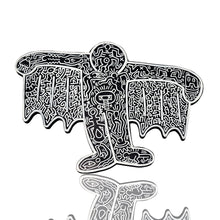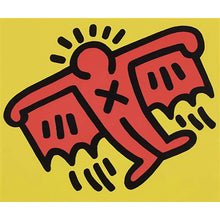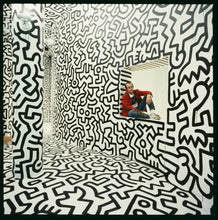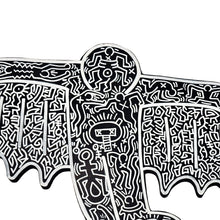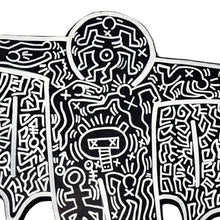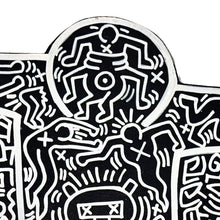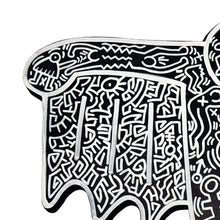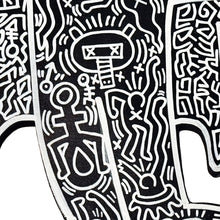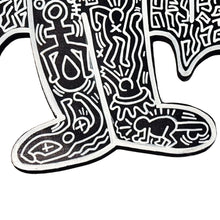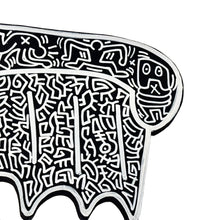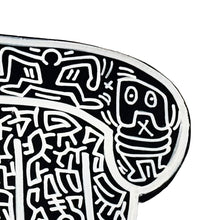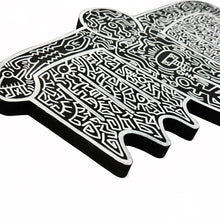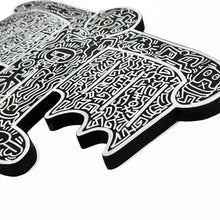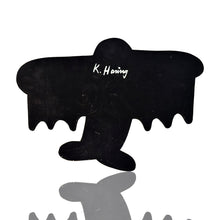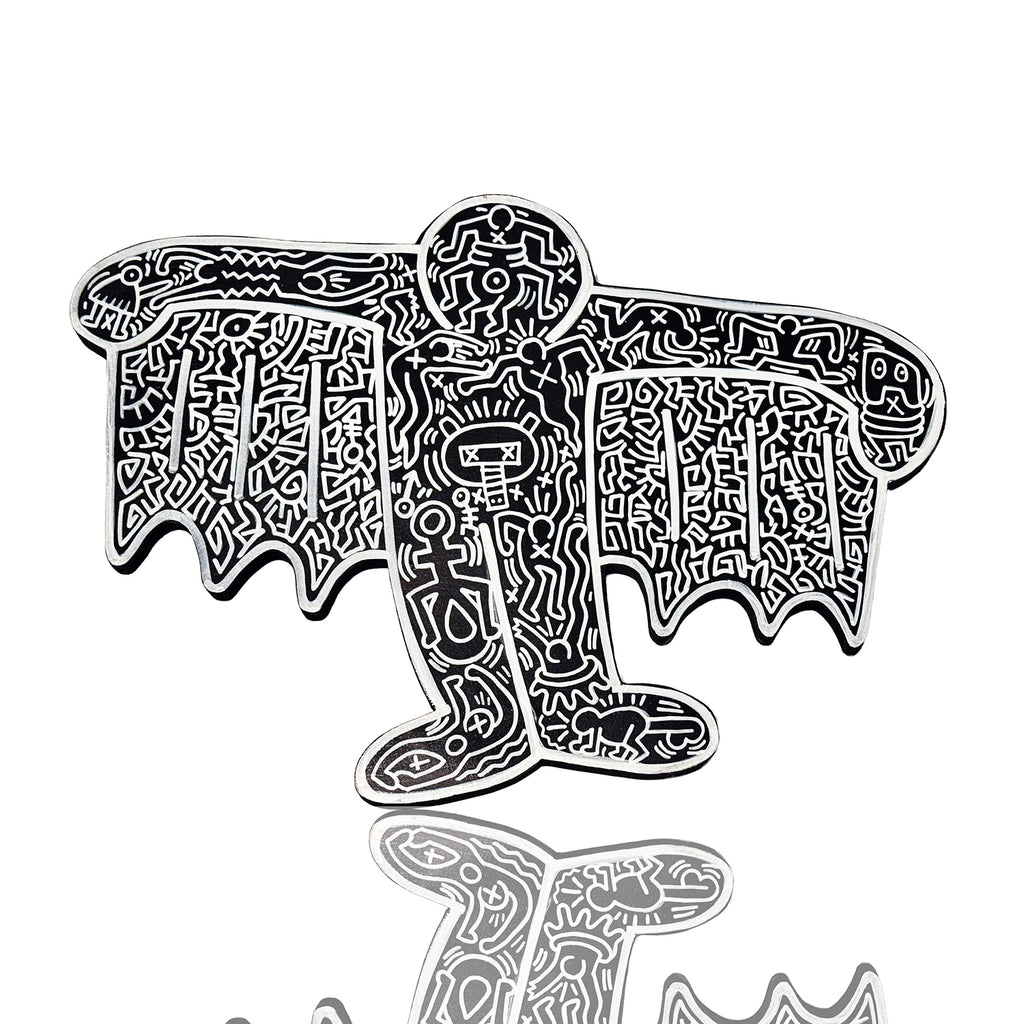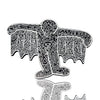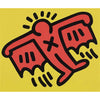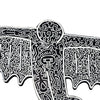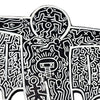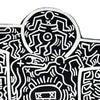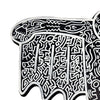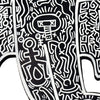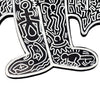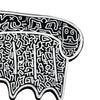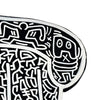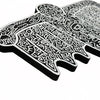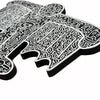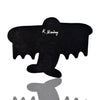'Flying Devil' by Keith Haring, 1988
Unique hand-doodled original on figural die-cut wood panel.
Featured is Haring's 'Flying Devil' artwork from his 'Icons' series of figures produced throughout the 1980's.
Reminiscent of Haring's infamous doodle ceiling from his NY Pop Shop or his bathroom mural at The Center in NYC from 1989.
13.2 x 18.4 x 0.85 Inches
33.5 x 46.7 x 2.2 Centimeters
Hand-drawn lines, sqiggles and character/icon doodles on die-cut figural wood panel.
Famous figures include the artist's 'Radiant Baby', 'Gay/Lesbian Pride Day' and character's from his 'Growing' and 'Retrospect' series.
Original Artwork (#1/1)
Hand-signed by the legendary artist in white paint pen on reverse.
*Note: Overall very good original condition with minor handling markings on reverse. See photo.
ABOUT THE ART
Keith Haring (1958-1990) reuses particular symbols, all present in the Icons series, to produce a memorable pictorial language. The symbols used in this portfolio first appeared in Haring’s New York subway drawings from early on in his career, notably the Radiant Baby ‘tag’ that the artist used in place of his signature on public art projects. Uncompromising in its positive tone, Haring’s syntax of signs in this series creates a universal language to be seen and understood by the masses of New York, thus producing a true public art charged with meaning.
Using light-hearted imagery and the visual language of commercialism and mass media, Haring critiques the proliferation of capitalism in 1980s New York. Haring used his art to oppose the negative effects of capitalism and mass consumerism, undoubtedly inspired by the Pop Art movement of the 1960s and his friend, Andy Warhol. The Icons series prints are rendered in flat, saturated colors as a nod to the rise of commercialism and mass production in Haring’s lifetime.
Heavily influenced by Andy Warhol and the wider Pop Art movement of the 1960s, his work bridges the gap between high art and mass consumerism so as to dissolve boundaries between fine art, political activism, and popular culture. As evidenced by his famous Pop Shop, Haring conflated high art with commercialism and so claimed to mirror the capitalist world that he lived in.
The 'Icons' series is also notable for its reworking of traditional Christian iconography to critique organized religion and the government amidst the HIV/AIDS epidemic of 1980s New York. Rooted in his encounter with the Jesus Movement of the 1970s, images like the 'Radiant Baby', 'Angel', and 'Flying Devil' are demonstrative of the way the artist shapes religious source material to reflect contemporary concerns of his generation. Haring’s use of redemptive imagery overflows with paradoxical themes like life and death, good and evil, religion and sexuality, heaven and hell, to speak to the ambiguities and socio-political injustices of the time.















